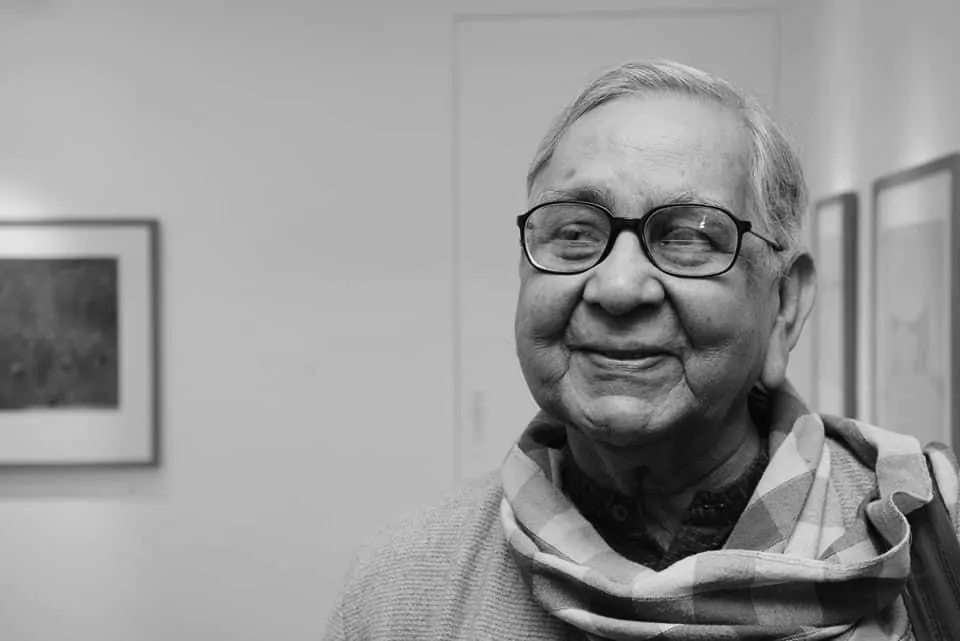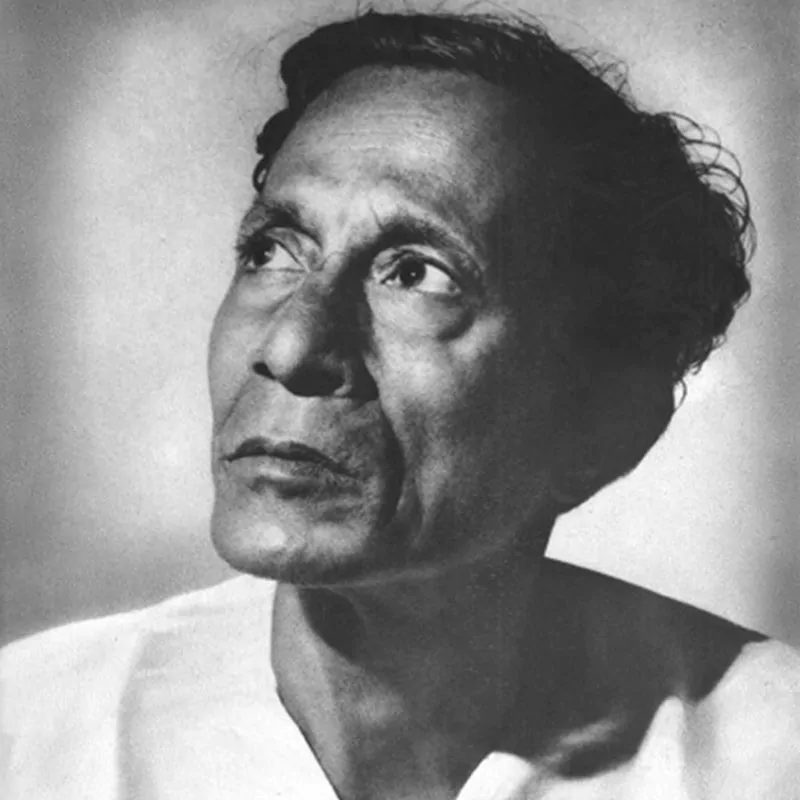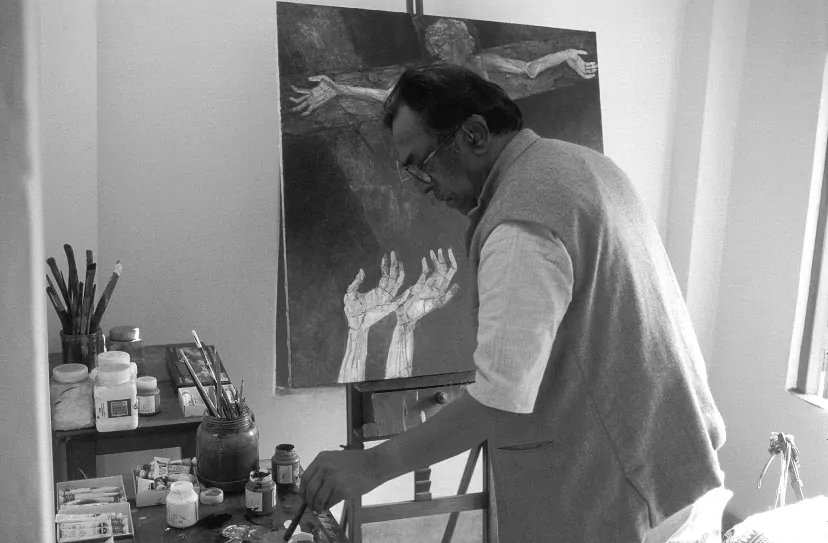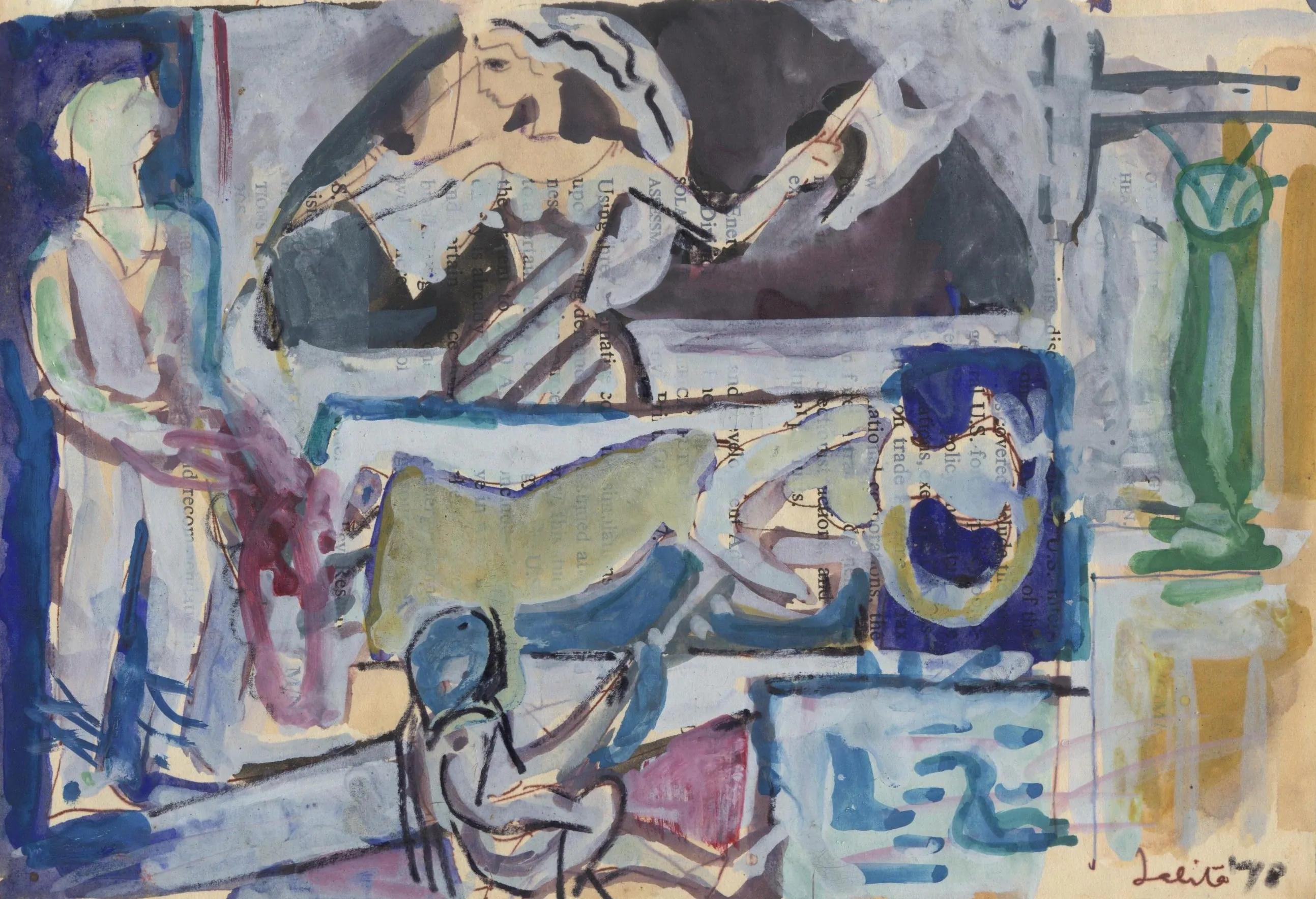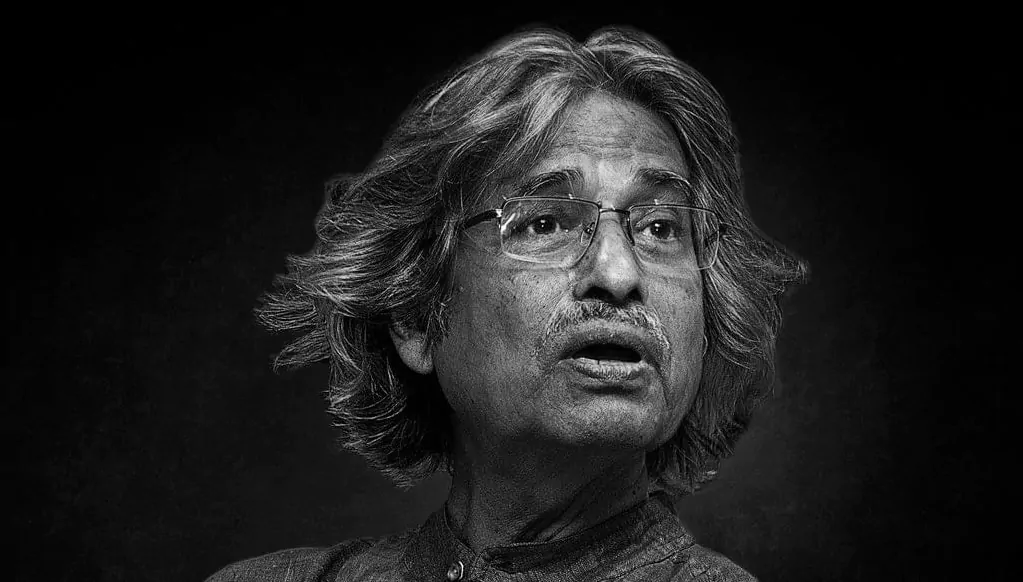Suhas Roy: In Quest of Radha & Beyond.
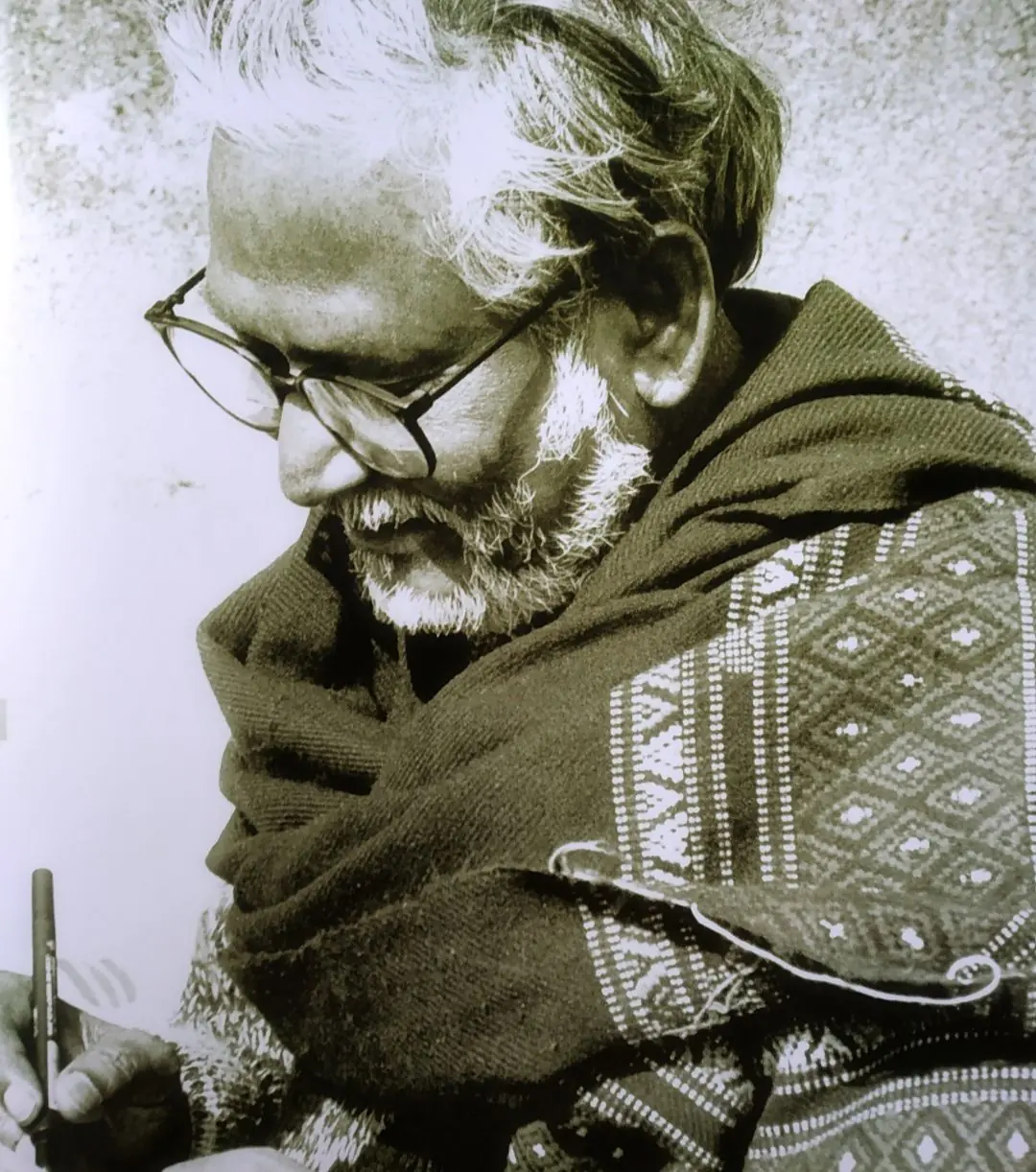
Suhas Roy(1936-2016) received his diploma in painting from the Indian College of Art & Draughtsmanship,Calcutta from 1953-1958. During this period he participated at the International Youth Art Exhibitions in Czechoslovakia.
In 1965 on a French Government he went to Paris & enrolled himself at S.W. Hayter’s Atelier 17 to learn graphic art & learnt mural art at Ecole Nationale Superieure des Beaux-Arts. The schedules in Paris were flexible enough to spend hours in the various museums. The wide exposure moved Suhas,from Rubens to Ingres to the whole treasure of Impressionist art was laid open like Pandora’s box-Monet,Manet,Sisley,Renoir with their methods of capturing natural light with bold & impulsive strokes. The method of capturing light & shade struck Suhas with a strange new feeling of awe & wonder. But already he was drawn to the human figure & more prone to human forms.

Suhas Roy Drawing, 1991.
During these museum visits Suhas searched out those lesser known painters whom he had admired through the prints in Calcutta. Roy very consciously shifted from landscape painting to portrait making. He understood that the easiest way to impress the viewer was to give him a portrait,a good beautiful face. Instead of restricting himself to a simple portrait maker, Suhas chose a very particular type of female face.
While he was adept in portrait making from the beginning-the tiny sketches he made of his colleagues & friends at the art college in Calcutta & those hasty jotting of people’s faces & gestures he encountered in Paris & on his trips in Italy bear testimony to his control over the genre. The mechanism clicked instantly. After the long spell of landscapes he was in search of an alternative. The same ego,sensitivity & passion returned to his portraits of women he termed as ‘Radha’.

Suhas Roy- Radha, tempera on board.
The format bears the same mystic flavour of his landscapes,the palette became more simplified. To characterize Suhas Roy as a narrative painter will be to minimize the scope of his oeuvre. Radha is a prototype of an icon. A frigid static sculptural face of the woman with nothing to communicate otherwise. When you look at her,you will possibly find she is not reciprocal & remains noncommittal to your attention. The narrative element in the case of Radha is somewhat inevitable due to the enormous myth that exists about this eternal muse.
According to the Vaishnava cult,Radha is a supreme being,a paramour to Lord Krishna. She is projected in endless lilas with her beloved. Passionate,sensous & utterly beautiful,she flirts,waits for the Lord to appear,meets him,offers herself in body & soul to the Lord. She is a character full of melodramatic ambiguities,but she is also an integral part of the Hindu pantheon valid in all stages of life & history. She is a perennial source of inspiration to the human eye. Her restless longing for Krishna is reflected in her behaviour,gaits & tender attitude.
It would have been easy for Suhas Roy to pick a clue or two from the written materials on Radha & Krishna & start a series. But the task was far more challenging when Roy opted for seeking a refuge in his own stream of consciousness.Initially he went by the popular belief about the myth & even decorated his early Radhas with elements available in the fable. The decision to change to human forms was slow. The true inspiration was the myth,by chance the passion found a correlative with Radha. Moreover to him a woman was a mysterious form. To add,felt Suhas,other elements like the image of Krishna or the other gopinis in the composition would be redundant because a sojourn into the realm of the ideal through the singular female face & body has been his sole intention. Radha became a pattern emblazoned to fill the eye,a music remote yet flooding to the ear. Indeed a sense of remoteness haunts the eyes when one looks at Radha. With so little said on the canvas, an odyssey is written.

Radha by Suhas Roy.
The whole idea was to whisk the seer away to another place,out of the doldrum of life. Roy often refers to the beautiful women made by the Pre-Raphaelites of England like Rossetti & Waterhouse. Waterhouse’s The Lady of Shalott sits in a canoe & proceeds to the many towered Camelot. To treat her as dead or alive is immaterial. Roy’s Radhas,at least some of them emanate the same unearthly flavour. His mystical women are alluring the viewer to the state of life where nature & women are on the same plane. Roy reaches his goal through an arduous textural experiment. Most of them are done in tempera,a medium as noted earlier which suits him best. Layers of colour,mostly monochromatic are put to develop a visual riddle as it were. Out of it emerges the face. Highlights are added on the forehead,on the chin,the nose, the hairline build up the sensitivity.
Suhas is not hesitant to call his Radhas the descendants of the women painted by Da Vinci,Raphael,Indian Miniature artists & of course the Pre-Raphaelites. Roy’s iconic Radha is a lonely lady. He was confident that no two Radhas are the same. The viewer may however categorize them as decorative & domesticated or even young. In the decorative pieces the influence of Rajasthani miniature is prominent. The jewels,the headgear, the tiara,the nose ring,all are there to add a certain luminous quality.

Suhas Roy- Radha, Mixed Media on Board.
The ones which are domesticated wear a simple lady-next-door look. Her hair is unarranged,the face is without makeup. she has a particular gaze that looks beyond a distance. These Radhas come closer to the middleclass women of Bengal. Suhas Roy’s Radhas become icons of beauty,a logo of life,an ever flowing lifecycle where poise & peace,beauty & grace reign supreme.
Vinayak Pasricha








